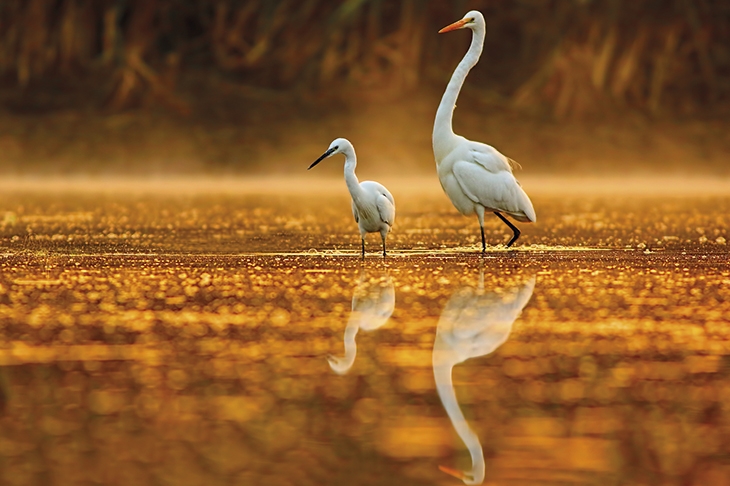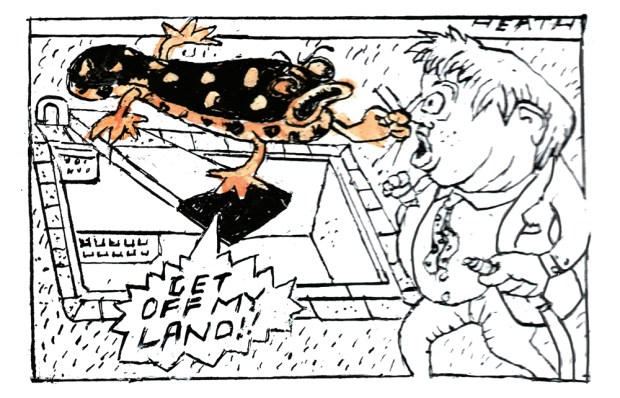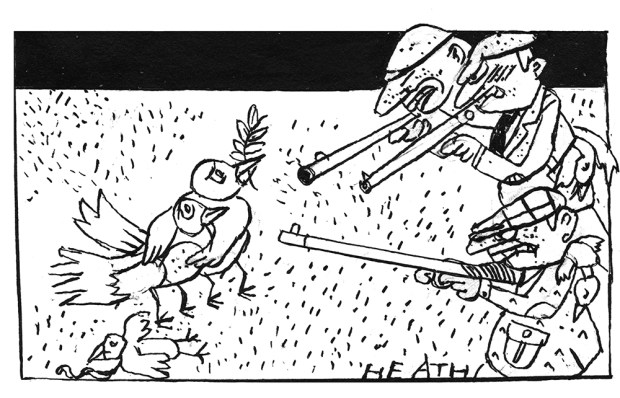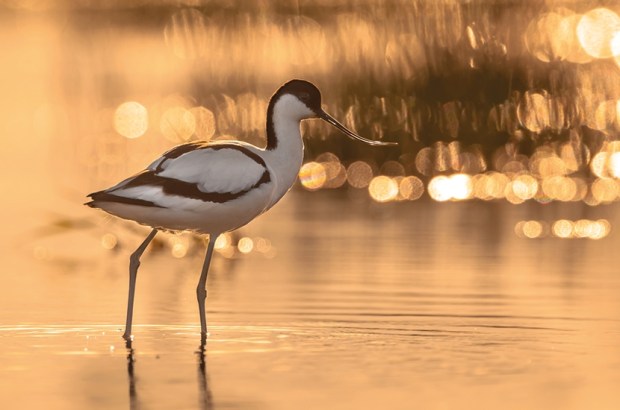There’s an unwritten rule in newspaper journalism that any story about egrets must have one of two headlines. Either ‘no egrets’ if numbers are dropping or ‘egrets, we’ve had a few’ if they are booming. At the moment, fortunately, it’s the latter.
The little egret (egretta garzetta) can be seen as something of a trailblazer. The first only nested successfully in England as recently as 1997, on Brownsea Island in Dorset, and there are now up to 1,000 pairs in the country, according to the RSPB. They compete for food with herons and cormorants on the Thames and even have been known to venture into cities and towns.
What looks like its big brother, the enormous great white egret (ardea alba) was, last year, seen in so many places in Britain that the website Bird Guides — the twitchers’ bible — no longer classifies them as a rare species and only reports sightings in regions where they remain scarce. There is also a third type of egret, the visiting western cattle egret (bubulcus ibis), which first bred here in 2008 and is still comparatively rare.
The great white is tall, elegant and stunning. The size is what sets it apart — it is as large as a grey heron — but also it has a bright yellow beak while the little egret’s is black. Both have black legs although the little egret has shiny yellow feet, nicknamed ‘golden slippers’ among birdwatchers.
Egrets were once common in Britain but were wiped out by the end of the Middle Ages, probably in part because of the ‘Little Ice Age’, which began in roughly 1300 and lasted for 500 years. It would be easy to cite climate change as the reason they have been flying over from Europe’s mainland in recent years, but that only goes some way to explaining the phenomenon. Yes, warmer winters have boosted populations in countries such as Holland which leads to overcrowding, forcing birds to fly further afield. But much more important are the efforts of conservation organisations and farmers who have worked with nature groups to provide the ideal environments for these birds. Reedbeds and lakes have been carefully managed to create the right shelter for ground nesting birds. It worked for the bittern, once almost wiped out in Britain but now named as the RSPB’s Bird of the Decade for its revival in the past ten years.
Egrets, like so many other birds which feed on fish and toads in shallow waters, are incredibly sensitive to long-term changes in water levels which is why the populations in areas such as Suffolk’s east coast are worried about the effects of the proposed Sizewell C construction project, for instance.
I have my own theory for the increase in numbers. People are simply noticing more. Lockdown has encouraged a resurgence in bird-watching and not just counting the blue tits, wrens and robins on the feeders. Instead, people are noticing and reporting the sightings of rarer birds on their permitted exercise outings. Great white and cattle egrets are being spotted more and more and their sightings reported which has helped track their positive progress.
Got something to add? Join the discussion and comment below.
Get 10 issues for just $10
Subscribe to The Spectator Australia today for the next 10 magazine issues, plus full online access, for just $10.
You might disagree with half of it, but you’ll enjoy reading all of it. Try your first month for free, then just $2 a week for the remainder of your first year.














Comments
Don't miss out
Join the conversation with other Spectator Australia readers. Subscribe to leave a comment.
SUBSCRIBEAlready a subscriber? Log in